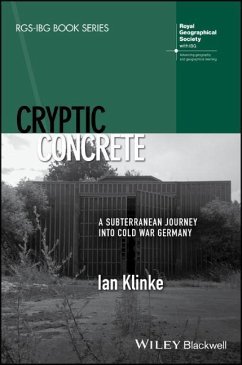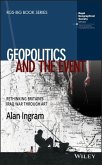Cryptic Concrete explores bunkered sites in Cold War Germany in order to understand the inner workings of the Cold War state.
_ A scholarly work that suggests a reassessment of the history of geo- and bio-politics
_ Attempts to understand the material architecture that was designed to protect and take life in nuclear war
_ Zooms in on two types of structures - the nuclear bunker and the atomic missile silo
_ Analyzes a broad range of sources through the lens of critical theory and argues for an appreciation of the two subterranean structures' complementary nature
_ A scholarly work that suggests a reassessment of the history of geo- and bio-politics
_ Attempts to understand the material architecture that was designed to protect and take life in nuclear war
_ Zooms in on two types of structures - the nuclear bunker and the atomic missile silo
_ Analyzes a broad range of sources through the lens of critical theory and argues for an appreciation of the two subterranean structures' complementary nature
'A serendipitous childhood discovery led the author on a personal and professional odyssey. Klinke immerses us in the zeitgeist of Cold War West Germany - a partitioned country created by post-war rivalries and foreign occupation. By investigating its subterranean qualities, he reveals a world far more complex and contradictory than accounts preoccupied with surface-level check-points and walls. Highly recommended.'
Klaus Dodds, Department of Geography, Royal Holloway, University of London
'Cryptic Concrete provides a fascinating and original exploration of how the distinctive German experiences of the Cold War and the aftermath of fascism can be read through their inscription in the architectural and landscape remains of atomic missile sites and nuclear bunkers. Ian Klinke reveals how the infrastructure of 20th century military destruction and survival informs the materiality of geopolitics in the present.'
Rachel Woodward, School of Geography, Politics and Sociology, Newcastle University
Klaus Dodds, Department of Geography, Royal Holloway, University of London
'Cryptic Concrete provides a fascinating and original exploration of how the distinctive German experiences of the Cold War and the aftermath of fascism can be read through their inscription in the architectural and landscape remains of atomic missile sites and nuclear bunkers. Ian Klinke reveals how the infrastructure of 20th century military destruction and survival informs the materiality of geopolitics in the present.'
Rachel Woodward, School of Geography, Politics and Sociology, Newcastle University








